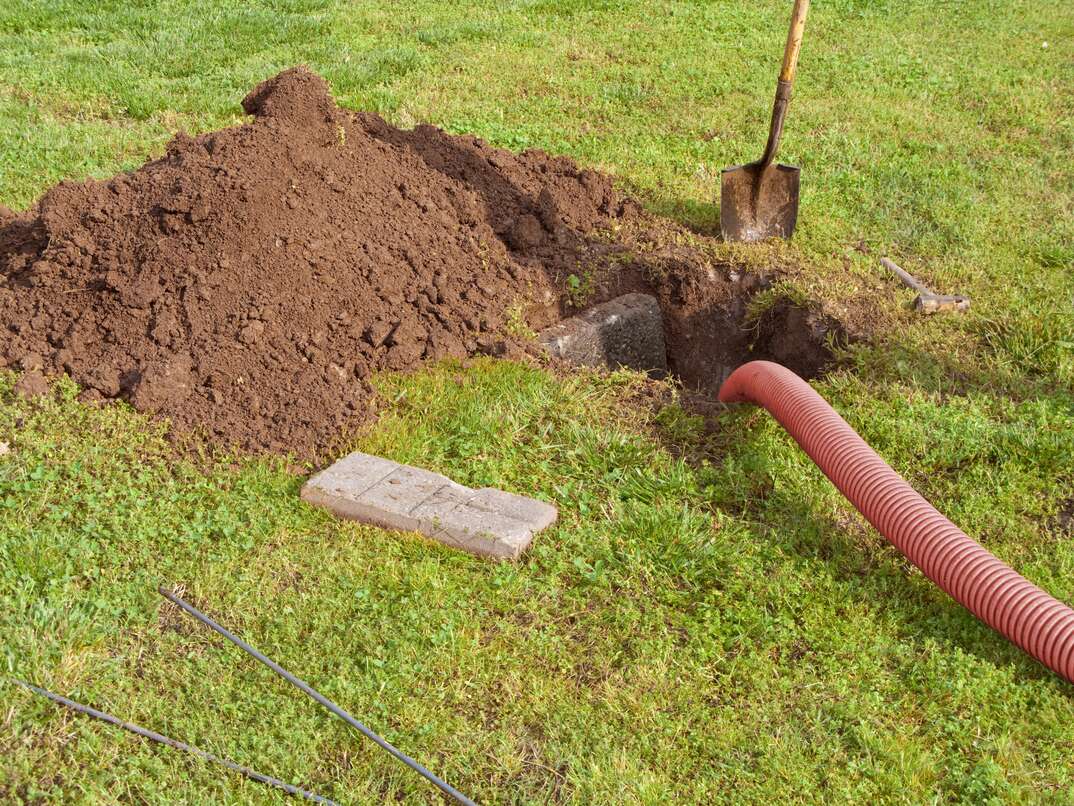- AppliancesElectriciansHVACLandscapingLocksmithPest ControlPlumbingRenovationRoofingT V RepairAll Home Improvement
- Car AccidentClass ActionCorporate LawCriminal DefenseDivorce LawEmployment LawFamily LawFinancial LawLegal AidMedical Injury LawyersMedical MalpracticeReal Estate LawWater Fire RestorationAll Legal
- InvestmentRetirementAll Finance
- Animal InsuranceAutoGeneral InsuranceHealth PolicyHome RentersAll Insurance
- DentalHealth SpecialistsAll Medical
- Animal CareVeterinaryAll Pets
- Auto GlassTowingAll Automotive
How to Find Your Septic Tank

Hopefully, your septic tank isn't something you need to think about too often. However, you could be facing a big mess and major inconvenience if something goes wrong.
Knowing where your septic tank is can help you act fast if there’s a problem. It can also make regular maintenance even easier.
Your septic tank isn't something that requires daily or even yearly maintenance, but that doesn't mean you can ignore it. There are several reasons why you might need to know the location of your septic tank.
Septic tanks should be inspected and pumped by a professional every three to five years. Some professionals will locate the tank for you, but it adds to the cost of services.
If you have a sewer backup or a flood on your property, knowing where the septic tank is can help you mitigate property damage. You'll also need to find your septic tank if you want to upgrade your septic system or do construction on your property.
How Do I Locate My Septic Tank?
Septic tanks are usually buried underground. The tanks tend to be large and smelly, so keeping them underground improves the appearance of your property. However, it does make the tank harder to find, especially if some time has passed since it was last accessed.
Using County or Other Property Records
A permit is required for septic installations. Permits help local governments ensure there won't be health or other problems caused by a septic tank. To get a permit, builders must file a detailed plan showing the septic tank's location on the property.
You can often find the permit and septic tank diagrams in county property records. These plans can be harder to find for older homes. Many counties make the records available online, particularly for newer homes. Additionally, you may find the tank location in other property documents, such as building plans or home inspection records.
With a Visual Inspection of the Property
In many cases, you may be able to find your septic just by looking at your property. Septic tanks shouldn't be under paved surfaces, by freshwater sources or near structures.
One option is to find the septic tank lid. Septic tank lids are at ground level but can get covered with grass and dirt.
Sometimes, septic tank installation creates some uneven ground. If you notice a high or low spot in your yard, it may be the septic tank. Full or leaking septic tanks can cause puddles or grass that's unusually tall and green.
Checking your sewer pipes can also help you determine where to look. Sewer pipes are located in the basement or crawlspace of a home and are relatively large — around 4 inches in diameter. If you can find which way these pipes leave your home, you'll know where to look for the septic tank. You can even use a metal soil probe to check for the sewer line every few feet until you find the septic tank. The tank itself should be 10 to 25 feet from the house.
Septic tanks are made from a variety of materials:
- Concrete
- Plastic
- Steel
- Fiberglass
Septic tanks are usually rectangular with two or more lids on the top that look like maintenance hole covers. Septic tank lids are at ground level for opening the tank during maintenance. Some new types of tanks are kept above ground.
How Deep Is a Septic Tank Buried?
Septic tanks are usually buried 4 inches to 4 feet underground. The exact depth depends on the type of tank and the property.
How Big Are Septic Tanks?
Residential septic tanks usually have a capacity of 750 gallons or more. The average septic tank for a four-bedroom home is around 1,200 to 1,500 gallons. Septic tank dimensions depend on the tank's capacity, shape and brand. For example, a 750-gallon tank might have dimensions like 70 inches by 60 inches by 60 inches, and a 1,500-gallon tank might measure 135 inches by 55 inches by 70 inches.
Elocal Editorial Content is for educational and entertainment purposes only. Editorial Content should not be used as a substitute for advice from a licensed professional in your state reviewing your issue. Systems, equipment, issues and circumstances vary. Follow the manufacturer's safety precautions. The opinions, beliefs and viewpoints expressed by the eLocal Editorial Team and other third-party content providers do not necessarily reflect the opinions, beliefs and viewpoints of eLocal or its affiliate companies. Use of the Blog is subject to the
Website Terms and Conditions.The eLocal Editorial Team operates independently of eLocal USA's marketing and sales decisions.



